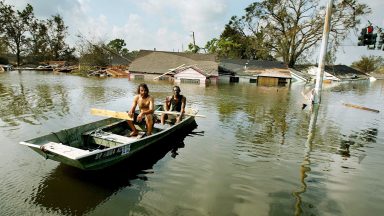
Hurricanes have been wreaking havoc suddenly and ruthlessly. The recent landfall of Hurricane Helene as a Category 4 storm on September 26 devastated many areas of Florida, where homes were washed away, roads were destroyed, and millions suffered from power outages. As the world watches in anticipation, Hurricane Milton is now expected to pose a significant threat to the Gulf Coast of Florida, echoing the catastrophic impacts of past hurricanes.
Just as Hurricane Katrina left its mark on New Orleans in 2005, experts are warning that the upcoming storm could be equally catastrophic. Jon Davis, chief meteorologist at Everstream Analytics, expressed grave concerns, stating, “We don’t know the details of that right now, but it certainly has all the makings.” As these catastrophic events unfold, it's essential to reflect on the devastating legacy of Hurricane Katrina.
The impact of Hurricane Katrina serves as a stark reminder of nature's power and the vulnerability of communities located in hurricane-prone areas. The storm not only resulted in tremendous physical damage but also claimed over 1,800 lives, making it one of the deadliest hurricanes in U.S. history. Understanding the past can help prepare us for future storms.
What Category Was Hurricane Katrina?
Hurricane Katrina was categorized as a Category 5 hurricane at its peak intensity. However, when it made landfall on August 29, 2005, near New Orleans, Louisiana, it was classified as a Category 3 hurricane. This transition illustrates the unpredictable nature of hurricanes and their potential to change rapidly.

How Many People Died from Hurricane Katrina?
Hurricane Katrina resulted in over 1,800 deaths, making it one of the deadliest hurricanes in U.S. history. The loss of life was not just a statistic; it represented families, friends, and entire communities torn apart by the disaster. The aftermath of the storm saw a significant humanitarian crisis unfold as rescue and recovery efforts were launched.

How Many Category 5 Hurricanes Have Hit Mainland U.S. Since 1990?
Since 1990, several hurricanes have reached Category 5 status, showcasing the increasing severity and frequency of storms. These include:
- Andrew (1992): Struck southern Florida as a powerful Category 5 storm, with sustained winds of 165 mph.
- Katrina (2005): Made landfall as a Category 1 storm and quickly intensified to Category 5.
- Michael (2018): Rapidly intensified into a Category 5 hurricane before landfall in Florida.
- Milton (2024): Recently strengthened to Category 5, posing a significant threat to Florida.
As we navigate through the season of hurricanes, the memories of past storms like Katrina remind us of the need for preparedness and resilience in the face of nature's fury. Understanding these events is crucial for mitigating future risks and ensuring community safety.
Stay tuned for updates as new storms develop, and always heed warnings from meteorologists and local authorities to stay safe during hurricane season.



